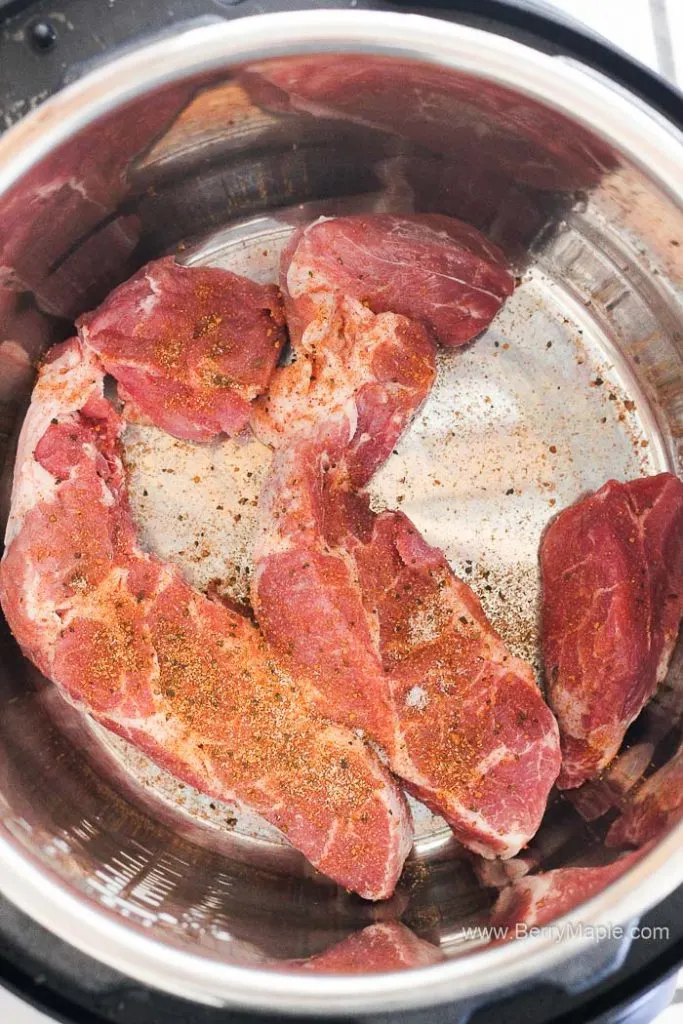This post may contain affiliate links.
Sometimes it’s difficult to figure out the proper internal temperature for cooked pork. The rules and regulations for what is considered a safe internal temperature for just about any meat have fluctuated throughout the years and more than likely will continue to change.
You know just as well as I know that overcooked or undercooked pork is not fun to eat. You either get a chewy experience of undercooked pork or hard textured overcooked pork that no one can bite into.
Related: Glass noodles pork stir fry

When working with cooked pork it’s important to use a meat thermometer to get the proper internal temperature for cooked pork. You want to cook up something delicious for the family without having any complaints. That’s why you should always make sure the cook this meat to the appropriate internal temperature.
Internal Temperature for Cooked Pork
There are many different cuts of pork to base the internal temperature for cooked pork on. The USDA recently revised their original number to reflect an internal temperature that they deemed safe for those who consume cooked pork. These numbers below reflect the most recent internal temperature for pork as of the date of this article.
Would you like to save this?
- Pork Loin should be cooked to an internal temperature of 145 to 160 degrees Fahrenheit
- Pork chops should be cooked to an internal temperature of 145 to 160 degrees Fahrenheit
- Ham should be cooked to an internal temperature of 140 degrees Fahrenheit
- Ground pork should be cooked to an internal temperature of 160 degrees Fahrenheit
It is highly recommended that you cook chops, roasts, loins, and tenderloin to an internal temperature of 145 degrees Fahrenheit and then allow it to rest for a term of three minutes. I highly recommend that ground pork be well cooked to an internal temperature of 165 degrees Fahrenheit to optimal taste.
The reason you want to make sure that all you cook to the proper internal temperature for cooked pork is to get the optimal taste and the most out of your pork. If you follow the guidelines for the right cut of pork and cook to the appropriate internal temperature for cooked pork, you’ll enjoy a moist, tender slice of meat every time.

How to Use a Meat Thermometer
The best way to check the internal temperature for cooked pork is to use a cooking meat thermometer. Mastering the skill of using a meat thermometer properly will ensure that you never eat an undercooked or overcooked piece of meat again. Making sure that you meet the appropriate internal temperature for cooked pork means you’ll need to use a meat thermometer to accurately read what temperature your pork has been cooked to. If you’re uncertain about how to use a meat thermometer, here are some tips on how to use one:
- I recommend you purchase a digital instant-read meat thermometer for quick temperature checking, as other options such as the bimetallic meat thermometer will take longer to get an accurate reading of the internal temperature for cooked pork.
- Place the end of the meat thermometer into the thickest part of your cooked pork. Try to reach the center of the meat to get the most accurate internal temperature reading.
- You will then hit a button on your digital meat thermometer to turn it on and it will display a reading. Only read the internal temperature for cooked pork once the reading has stayed at one number for a period of time, such as half a minute.
- If the meat thermometer doesn’t show an appropriate internal temperature for cooked pork, as listed above, then cook the pork a bit longer until it reaches optimal internal temperature.
Pork is a really delicious slab of meat to enjoy all year round and it truly tastes the absolute best when you follow my advice and cook it to the recommended internal temperature for cooked pork.
